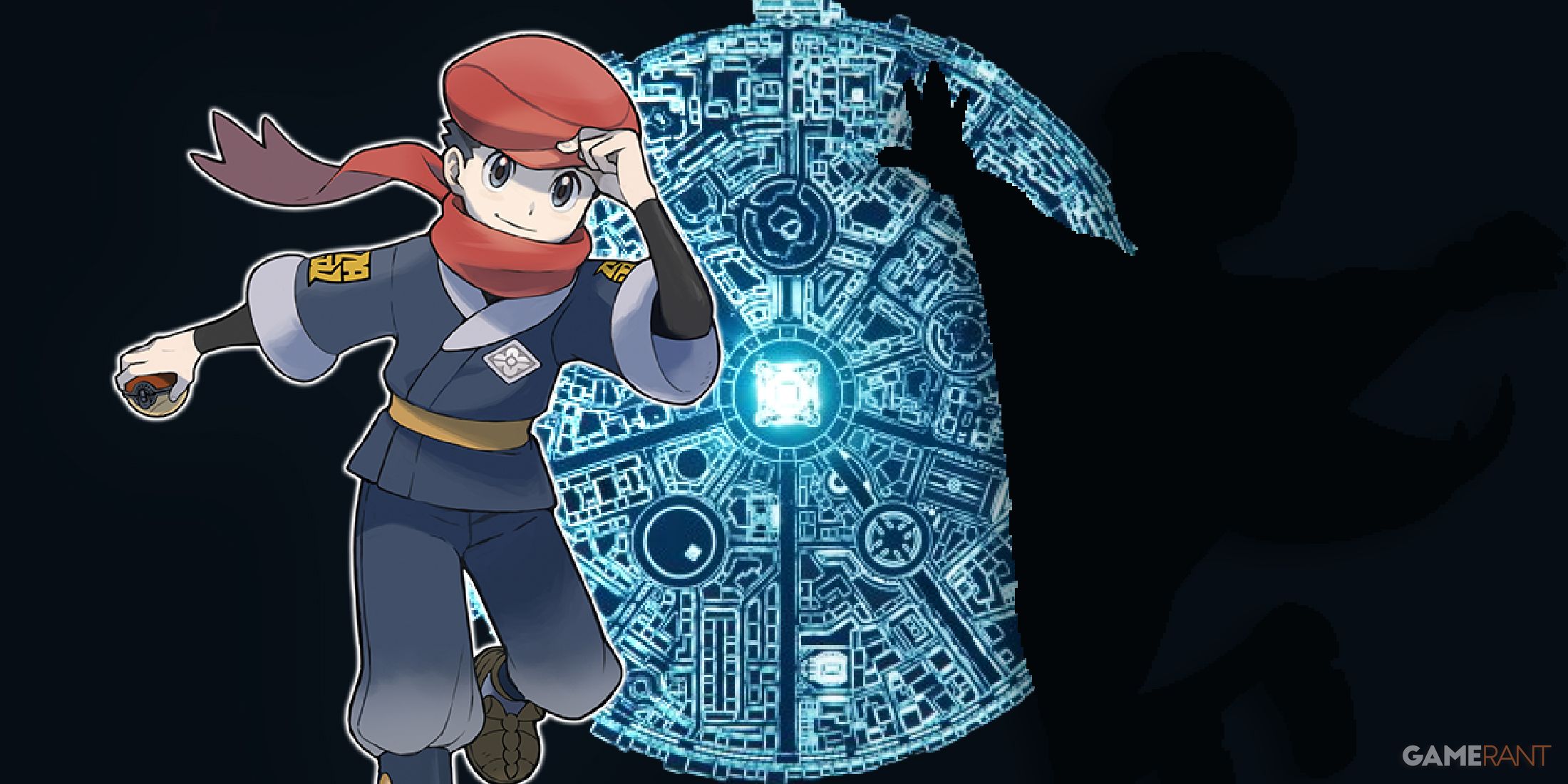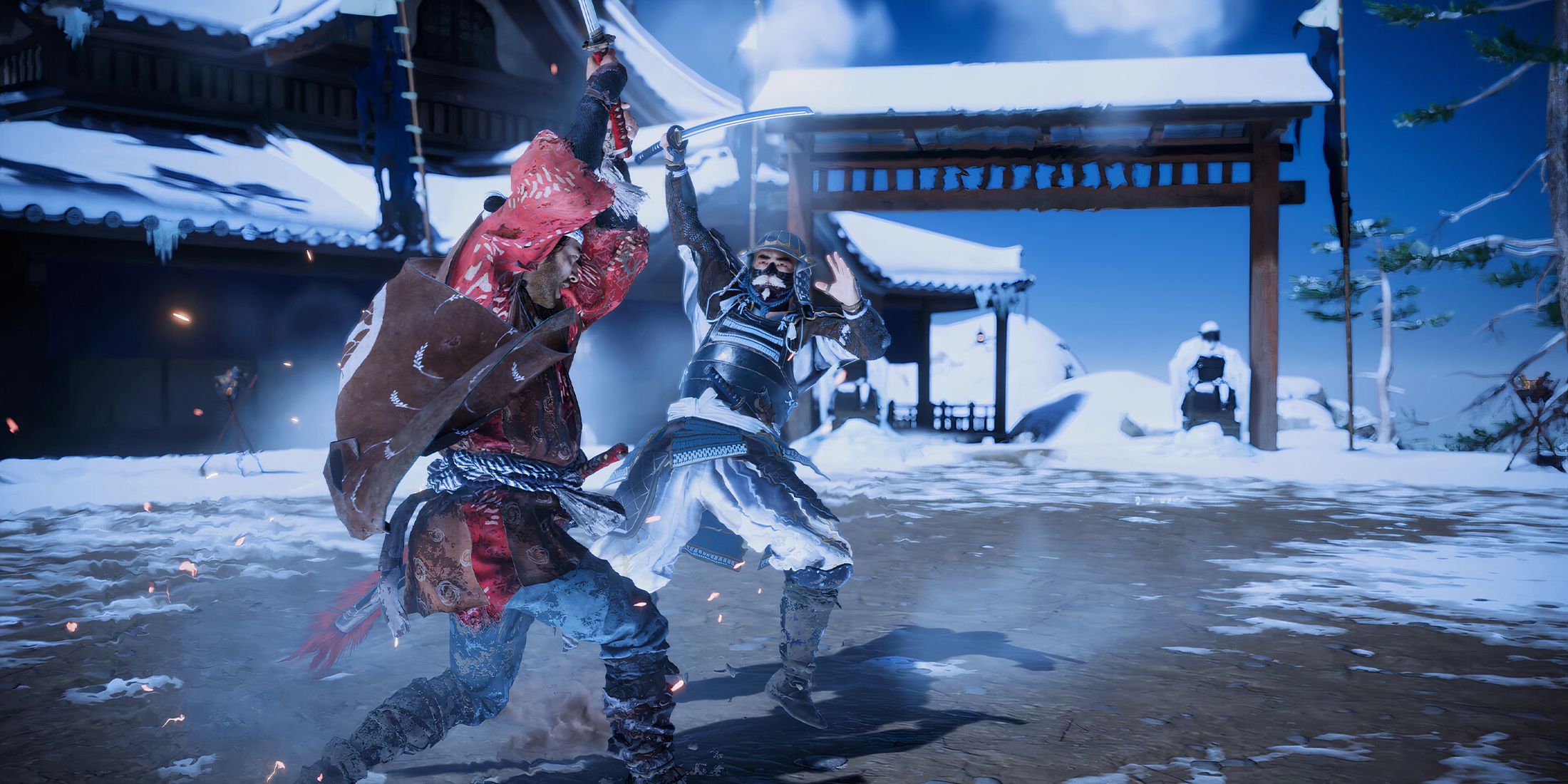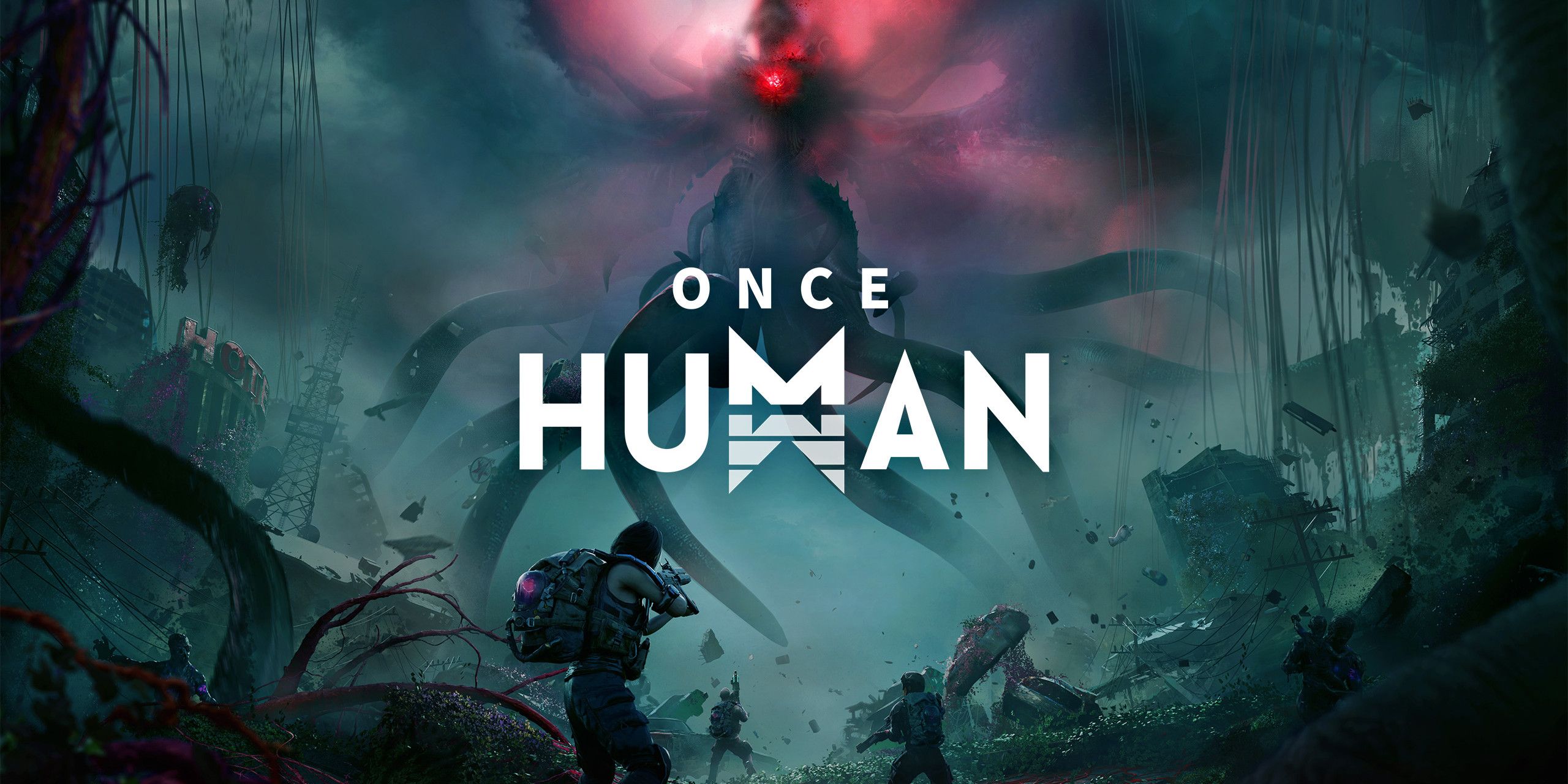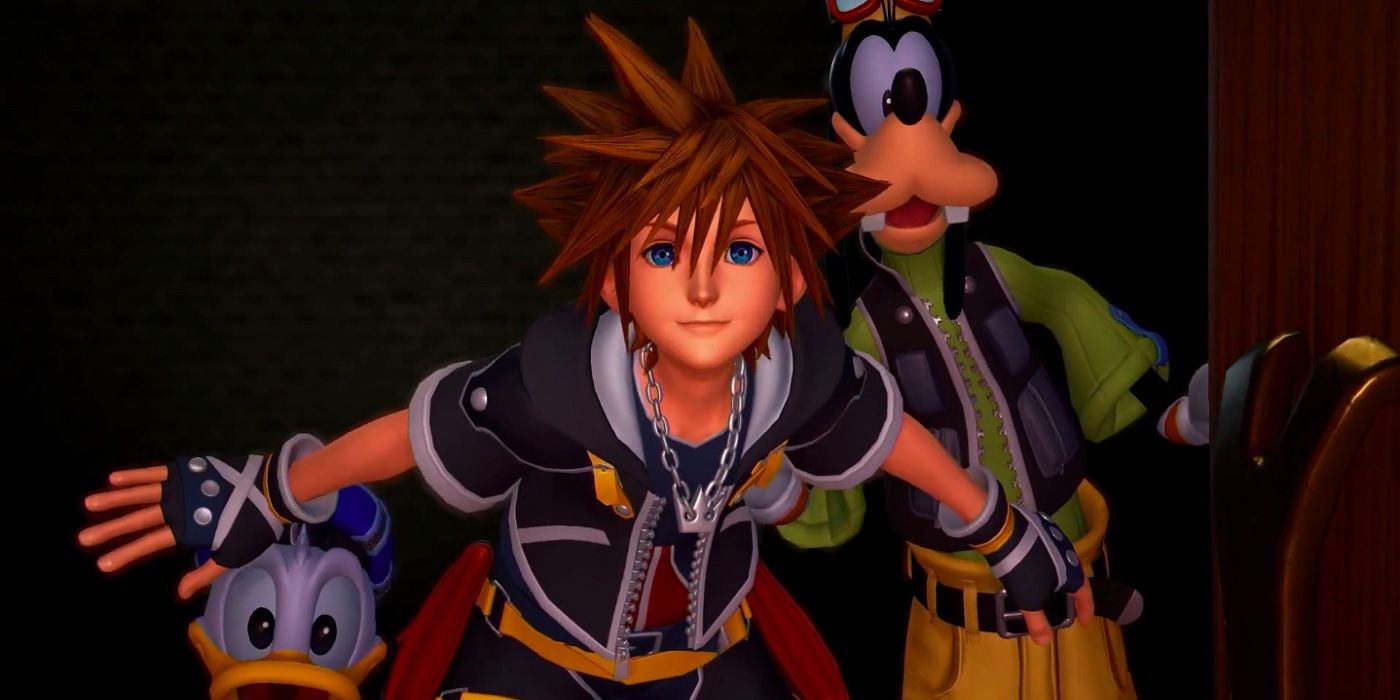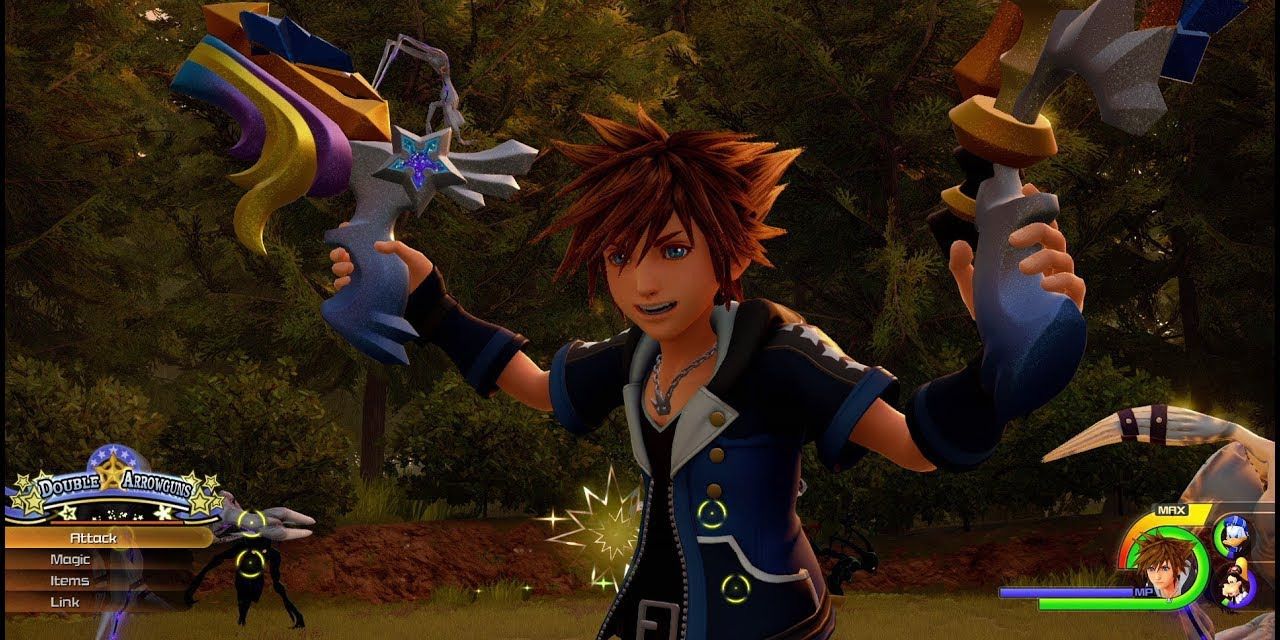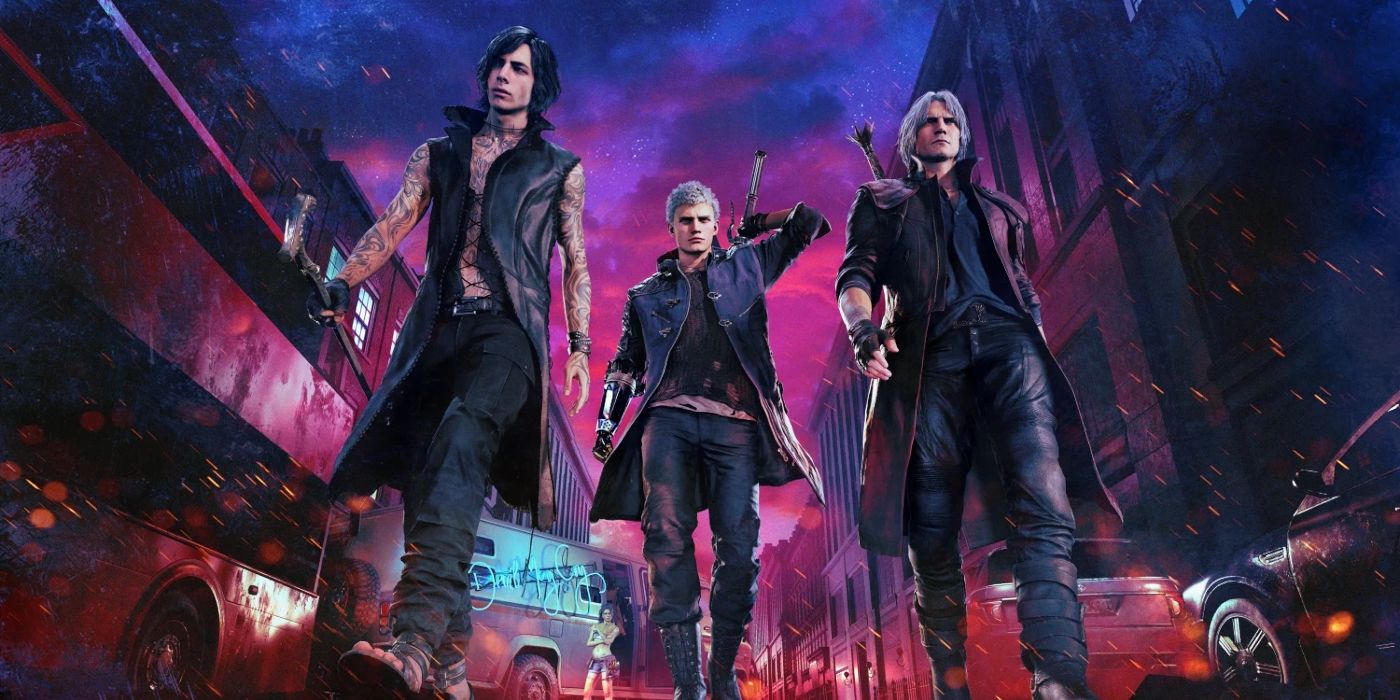Kingdom Hearts has risen from an incredibly unlikely crossover event between Disney and Square Enix in 2002 to one of gaming's most iconic and popular franchises. The series spans more than a dozen games at this point, with a plethora of different genres and styles of game included, while mobile and portable outings veered away from Kingdom Hearts' action RPG roots as fans waited almost fifteen years between mainline entries. A lot of hype was built around the release of the third title, but many players found parts of the game wanting compared to its immediate predecessor, specifically the combat. As a result, Square Enix should take a page from Capcom's stylish action series Devil May Cry if they hope to engage with those players again.
The original Kingdom Hearts was a departure for Square Enix in many ways. The ambitious crossover moved many elements of Final Fantasy into a real-time action framework that mixed an active battle system with menu-based abilities like magic and summon attacks, and this fusion of styles worked out well for Square Enix as Kingdom Hearts quickly became a fan-favorite franchise. Kingdom Hearts 2 improved on that battle system in almost every regard, and it is hailed by many as the best Kingdom Hearts game to this day.
The next mainline entry missed a step with many players with a greatly simplified battle system and low difficulty on the standard difficulty setting. Many Kingdom Hearts fans missed the difficulty and more involved combat of KH2, and going forward, Square Enix might do well to take a page from the book of Devil May Cry.
Letting The Combat Shine
Many games in the Kingdom Hearts series have a focus on combat, and it is often executed well, not just in KH2. The first prequel title, Birth By Sleep, expanded on the gameplay from KH2, incorporating elements from that game and from Chain of Memories. Players were able to acquire and craft a wide variety of abilities to add to a "deck" of abilities they could employ in combat. Capturing this awe with combat is something that Kingdom Hearts 3 struggled with. Many players felt that Sora never truly felt more powerful throughout the progression of KH3, but simply had access to more and more powerful items and unrelated abilities like the attractions.
Kingdom Hearts 2's introduction of reaction attacks, context-sensitive attacks and maneuvers based on what enemy prompted them added a lot of individuality to the boss battles. This went a long way to accentuating the enemy design that Kingdom Hearts is famous for. They meshed well into a system that promoted quick reaction time and usage of the block and counter mechanics to overcome swarms of different enemies and very powerful bosses, which resembled the counter and punish mechanics in fighting games that the Devil May Cry franchise adapted to adventure games deftly.
The form changes from KH2, and implemented in a variant form in Birth By Sleep, went a long way to making players feel like the Keyblade warriors were themselves becoming more and powerful. This feeling of growing power and the satisfaction of pulling off stylish strings of attacks is part of what made KH2's combat so immediately rewarding and is a hallmark of the DMC series. Abandoning these for the form changes in KH3, where it is not Sora changing form but the Keyblades themselves, shifted the focus from the player character to the weapons they were able to wield. It is worth pointing out that the system of obtaining Devil Arms in Devil May Cry is similar, yet these weapons are obtained by defeating powerful bosses instead of as gifts.
The different places in KH1, KH2, and Birth By Sleep for players to explore the battle system also go a long way to improving replayability. Many players still return to the coliseum in KH2 or the battle arena in Birth By Sleep as a fun way to explore different builds for their characters and a way to test their skills by blasting through waves of enemies to achieve higher scores. This feature was noticeably missing from KH3, to the game's detriment in many fans' opinion. Also missing was the secret boss fight against Sephiroth of FF7 infamy that was present in the first two mainline games. This boss fight was another great way for players to test their skill against a demanding battle system.
What Can Be Learned
Complexity of combat is something Devil May Cry is famous for. Dante, Nero, Vergil, and other playable characters are given increased access to attacks and special abilities that expand on an already robust system as the games progress. Emphasis on precise timing, knowledge of enemy patterns, and ability to avoid damage while exploiting and punishing enemy mistakes make the gameplay engaging for players. Kingdom Hearts 2 had a lot of these elements present, reacting quickly with blocks and counterattacks depending on the situation was paramount, and players that wanted to tackle the biggest challenges had to adapt on the fly to different types of attacks and spells from enemies.
The lack of a coliseum or similar mode in KH3 should be fixed in another mainline entry. As stated earlier it can go a long way to improving replayability. The Bloody Palace modes in the DMC games go far in bringing players back for more. The tower mode offers waves and waves of enemies punctuated with the boss fights present through the story mode to create an incredible challenge that many players return to for years after release of a Devil May Cry game.
Difficulty is another place Devil May Cry and games like Sekiro shine for many players and was something present in KH2. Even on standard difficulty, Kingdom Hearts 2 was not an easy game. Many players reloaded saves more than once to overcome powerful bosses like the members of Organization XIII or monstrous Heartless like the Dark Thorn in Beast's Castle, so many players feel like KH3 faltered by a much simpler difficulty than previous titles. While the intent to draw in new fans is more than logical and the inclusion of the Critical Mode difficulty later in KH3's lifespan helped assuage this complaint for some, many players would be glad to see the next entry return to a more difficult level in the standard mode.
While the next mainline entry for Kingdom Hearts has yet to be officially announced, most would assume based on the ending of KH3 that another game is inevitable. While overall KH3 is not a bad game objectively, there are many fans who would like to see the next entry eschew the trend toward lower skill entry and again craft an experience that lets players test their skills. Improving replayability with the return of a coliseum-style battle mode, bringing back a more complex battle system, and raising the difficulty bar would go a long way for making many fans excited about the future of the franchise.
A new Kingdom Hearts game is not known to be in development.

